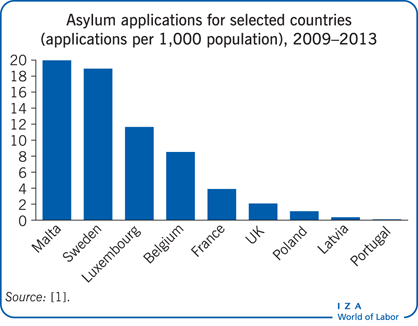Elevator pitch
Policy toward asylum-seekers has been controversial. Since the late 1990s, the EU has been developing a Common European Asylum System, but without clearly identifying the basis for cooperation. Providing a safe haven for refugees can be seen as a public good and this provides the rationale for policy coordination between governments. But where the volume of applications differs widely across countries, policy harmonization is not sufficient. Burden-sharing measures are needed as well, in order to achieve an optimal distribution of refugees across member states. Such policies are economically desirable and are more politically feasible than is sometimes believed.
Key findings
Pros
Viewing refugees as a public good provides a basis for cooperation among countries.
International cooperation can enable better outcomes for refugees and for host country populations if the policies are appropriate.
Large strides have been made in developing the EU’s Common European Asylum System.
Some foundations have been laid for the development of a truly EU-wide policy that focuses on the distribution of refugees.
Public opinion is more supportive of supra-national policies than is often believed.
Cons
Policy harmonization between EU countries is not sufficient to gain the full benefits of cooperation on asylum policies.
Deeper integration of policies would be required to ensure an appropriate distribution of refugees.
Loss of national control of asylum policy may present political challenges for member states.
Closer cooperation between developed countries is only really possible within the framework of the EU.
Deeper policy integration, while helpful, would have only a small impact on the world refugee problem.
